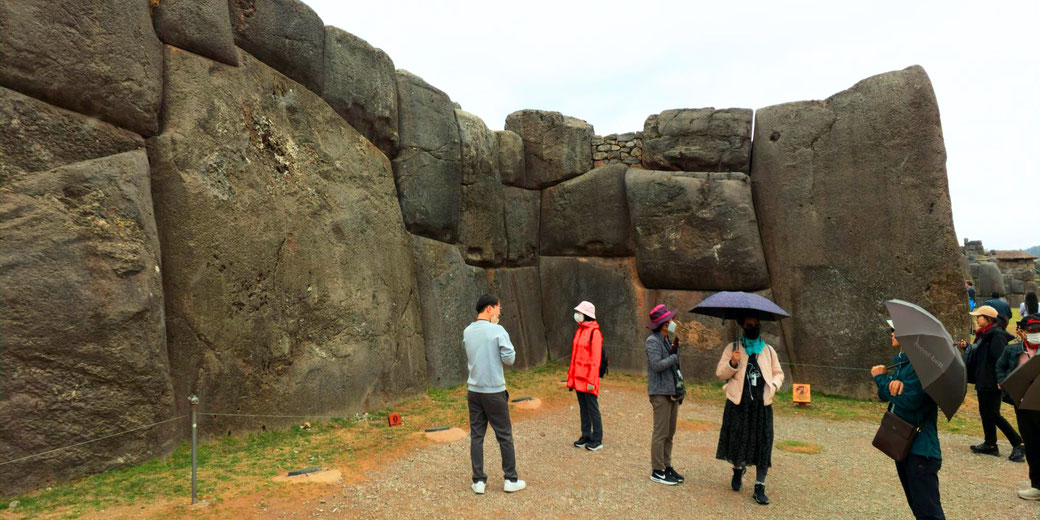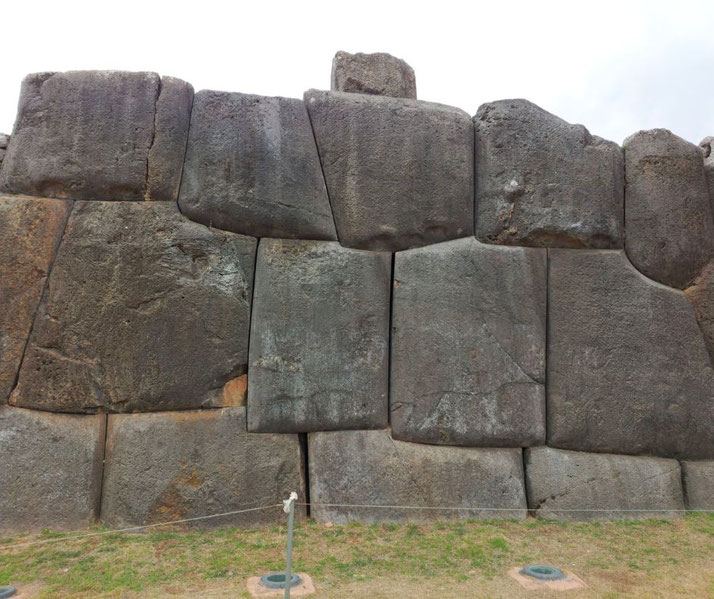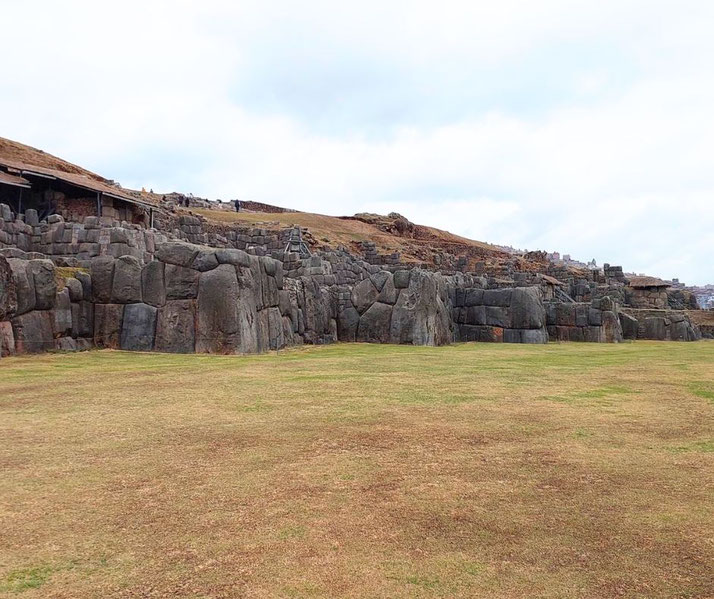The incredible Inca fortress of Sacsayhuamán that defied conquerors and time

In the rugged terrain of the Andes Mountains, just a short distance from the ancient Inca capital of Cusco, lies Sacsayhuamán—a breath-taking megalithic fortress.
Often overshadowed by the more famous Machu Picchu, this architectural marvel is a rare, surviving artifact of the Inca civilization's architectural brilliance.
Why military expansion was important to the Inca
Originating in the early 13th century, the Inca Empire grew to dominate a vast territory that extended from modern-day Colombia to Chile.
At the heart of this empire was Cusco, a city believed to have been founded by Manco Cápac, the legendary first Sapa Inca.
As the empire expanded, so did the need for fortifications and religious centers, leading to the construction of monumental structures like Sacsayhuamán.
Who built Sacsayhuamán?
While the fortress is commonly attributed to Pachacuti, the ninth Sapa Inca renowned for his transformative rule, it's important to note that such monumental projects in the Inca Empire were often multi-generational endeavors.
The construction likely spanned several decades, possibly even continuing into the reign of Huayna Cápac, Pachacuti's grandson.
The sheer scale of the project, involving the quarrying, transportation, and precise placement of massive limestone blocks, suggests a highly organized labor force and advanced engineering skills.
The labor force for the construction likely came from a system known as "mit'a," a form of tribute labor that the Incas employed for public works projects.
Workers would have been well-fed and cared for, as the Inca state took labor obligations seriously and provided for those who contributed to such monumental undertakings.

The astonishing architecture of Sacsayhuamán
The construction technique used for Sacsayhuamán is known as Cyclopean masonry, a method that involves fitting large, irregularly shaped stones together without the use of mortar.
Some of these stones weigh as much as 200 tons, and yet they are fitted together with such precision that it's often impossible to insert even a sheet of paper between them.
This has led to a great deal of speculation and debate among researchers about the methods used to transport and place these enormous stones.
Theories range from the use of log rollers and earthen ramps to more speculative ideas involving lost ancient technologies or even extraterrestrial intervention.

The fortress also held ceremonial significance. Some scholars believe that Sacsayhuamán was dedicated to Inti, the Inca sun god, and served as a site for important religious rituals.
The layout of Sacsayhuamán also suggests careful planning in accordance with astronomical alignments and natural features.
The fortress offers a panoramic view of the surrounding landscape, including key landmarks and celestial events that were of significance to the Inca.
This integration of architecture with the natural world is a hallmark of Inca design and adds another layer of complexity to our understanding of the site.
The most important surviving features of the ruins
The fortress is most famous for its zigzagging walls, a series of three parallel ramparts that stretch for nearly half a mile.
These walls are often interpreted as representing the teeth of a puma, a sacred animal in Inca cosmology.
The symbolism is thought to extend to the city of Cusco itself, which was designed in the shape of a puma according to some interpretations, with Sacsayhuamán representing the head.

Beyond its walls, Sacsayhuamán also features a variety of other architectural elements that have survived the ravages of time and human activity.
These include towers that once stood atop the ramparts, providing strategic vantage points for defense and possibly serving ceremonial purposes.
Although these towers have largely been dismantled, their foundations offer clues to their original design and function.
The site also includes a series of underground chambers, the purpose of which remains a subject of scholarly debate.
Some suggest they were used for storage, while others believe they had a ceremonial function.
When the Spanish attacked Sacsayhuamán
The Spanish conquest of the Inca Empire in the 16th century had a profound and irreversible impact on Sacsayhuamán, transforming it from a symbol of Inca power and ingenuity to a poignant reminder of a civilization's downfall.
Led by Francisco Pizarro, the Spanish conquistadors arrived in Peru in the early 1530s, and by 1533, they had captured Cusco, the heart of the Inca Empire.
Sacsayhuamán, with its strategic location overlooking the city, was also seized, marking a significant loss for the indigenous population.
The fortress, once a bastion of Inca military and spiritual might, fell into the hands of foreign invaders who neither fully understood nor appreciated its cultural significance.
However, Sacsayhuamán would not be subdued without a fight. In 1536, Manco Inca Yupanqui, who had initially been installed as a puppet ruler by the Spanish, led a massive rebellion against the foreign occupiers.
Using Sacsayhuamán as his base, Manco Inca laid siege to Cusco in an attempt to reclaim the lost capital.
For several months, the fortress became a battleground, its walls and towers serving as defensive positions for Inca warriors.
Despite their valiant efforts and initial successes, the Inca forces were ultimately unable to dislodge the Spanish, who were better armed and used advanced military tactics, including the use of artillery.
The fortress was recaptured by Spanish forces, and its towers were dismantled to prevent any future use by rebelling Incas.
What happened to the fortress after the Inca?
After the Spanish recaptured the fortress following Manco Inca Yupanqui's rebellion, its strategic importance waned.
The Spanish colonial authorities began to repurpose its massive stones for building projects in Cusco, effectively transforming the once-majestic fortress into a quarry.
This practice led to the dismantling of significant portions of the structure, including its towers and some of its walls.
What remained was a shadow of its former self, yet even in this diminished state, Sacsayhuamán continued to evoke awe and wonder among those who encountered it.
Today, Sacsayhuamán stands as a complex symbol with multiple layers of meaning.
For the indigenous people of Peru, particularly the Quechua, it is a poignant reminder of a glorious past and a heritage that survives despite centuries of colonization and cultural disruption.
What do you need help with?
Download ready-to-use digital learning resources
Copyright © History Skills 2014-2024.
Contact via email
With the exception of links to external sites, some historical sources and extracts from specific publications, all content on this website is copyrighted by History Skills. This content may not be copied, republished or redistributed without written permission from the website creator. Please use the Contact page to obtain relevant permission.





